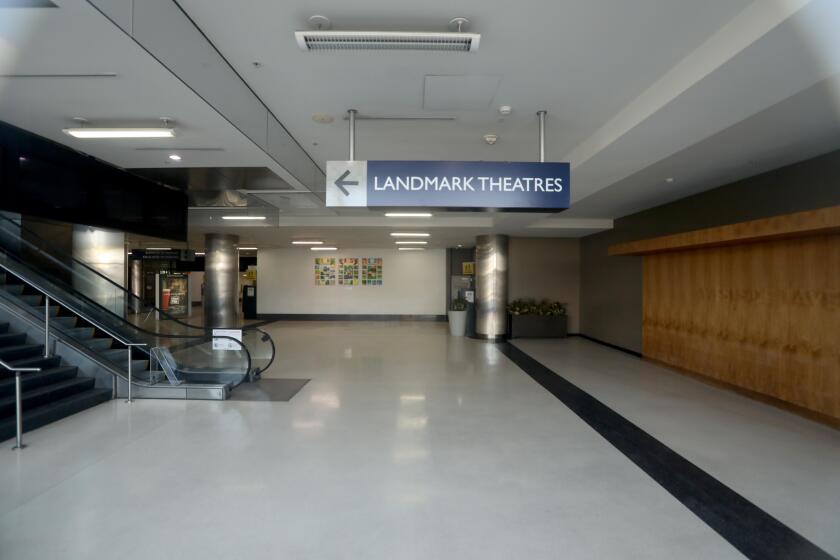Prison Clinics Called Dirty, Deadly
SACRAMENTO — Despite a court order to improve medical care for inmates, San Quentin State Prison’s health facilities and treatment practices are so harrowingly bad that many sick prisoners should not be taken there at all, independent examiners have concluded.
The court-appointed experts inspected the medical records of 10 inmates who died over the last few years in California’s oldest and best known prison and concluded that in each case, the treatment “showed serious problems” and “most deaths were preventable.”
Doctors and nurses misdiagnosed illnesses, gave patients the wrong medications, neglected them for months and even years or delayed sending them to emergency rooms until they were fatally ill, the experts discovered.
The examiners watched a dentist examine inmate after inmate while wearing the same pair of gloves. Records were in such disarray that doctors reported that they could not find medical files for at least 30% of the inmates they examined.
Based on visits to the prison earlier this year, the experts’ April 8 report documented filthy clinics and patient housing. Dental examinations are done in a place without light or water; inmates are initially evaluated in a room without a sink for washing hands; nurses until recently used a broom closet as an examination room; and wheelchair-bound patients cannot roll into the hospital cells on their own because the doors are too narrow.
“We found a facility so old, antiquated, dirty, poorly staffed, poorly maintained, with inadequate medical space and equipment and overcrowded that it is our opinion that it is dangerous to house people there with certain medical conditions and also dangerous to use this facility as an intake facility,” the experts wrote.
The examiners found less dreadful but nonetheless extensive shortcomings with the medical care at Salinas Valley State Prison and the California State Prison at Sacramento, in Folsom. Although they found improvements, the visits uncovered some of the same management problems that plague San Quentin, including a lack of basic medical equipment, dirty facilities and a culture of indifference among some senior medical staff.
Taken together, the site reports raise major questions about California’s compliance with the settlement of a lawsuit charging that inmate medical care was so poor it amounted to cruel and unusual punishment.
The case was settled in 2002 and is being overseen by U.S. District Judge Thelton Henderson in San Francisco, who appointed the monitors.
Under the terms of the settlement, the state’s prisons should already be making improvements, and must complete them by 2008.
Henderson, who last year threatened to appoint a receiver to take over the entire state Department of Corrections, discussed the reports Wednesday in Sacramento with the medical experts, state prisons commissioner Roderick Hickman and, separately, state Sen. Gloria Romero (D-Los Angeles), chairwoman of a Senate panel investigating state prisons.
Todd Slosek, a corrections spokesman, said department officials will be prepared to discuss the problems at a hearing Romero has set for today on the broader topic of prison healthcare costs.
“We’re currently working with the courts to address the issues raised by the experts,” he said, adding that the department has developed a remedial plan for the deficiencies found at San Quentin.
Romero said the reports make her question whether the prison system is capable of reforming itself. She noted that while $1 billion of the $7-billion annual prison budget is spent on healthcare, the reports suggest that much of this money is squandered.
“What these reports reflect is there has been a culture of negligence by the bureaucracies across the various administrations in terms of addressing the most basic healthcare needs of inmates,” Romero said.
The monitors -- who include doctors and nurses with experience in prison healthcare -- raised the same concerns about the overcrowded San Quentin prison, which is supposed to house no more than 3,317 inmates but has a population hovering around 6,000. They noted the incredibly low expectations of the staff, who would refer to “the San Quentin way” and say that they were “making do with the hand we’ve been dealt” when discussing the prison’s inferior clinics and equipment.
The experts also noted that the prison only emerged within the last decade from a previous federal order to improve medical care.
“The system of organizational structure within the [California Department of Corrections] that permitted this facility to deteriorate over the past 10 years to the state described in this report must be addressed as well,” they wrote. “These problems have not occurred overnight.”
Among the problems at San Quentin identified by the examiners:
* Three patients who later died had been seen by the same doctor, who the experts said failed to properly treat patients with clear signs of extreme illness and did not refer them for emergency care “until their conditions had deteriorated to the point where their deaths were inevitable.” The doctor, who was not named in the report, was placed on administrative leave after the third death.
* One patient identified as having “extremely high blood pressure” was “basically neglected for over a year and a half” until he died.
* Another patient who died from renal failure was not correctly diagnosed for “an extended period” and then was not given dialysis. He was, however, given medicines that were not safe for him.
* A diabetic inmate with a foot problem was housed in the mental health unit because there were no empty beds in the medical unit. There, his shoes were taken away, as is customarily done with psychotic and suicidal patients, even though his bare foot was then made more vulnerable to damage.
The experts found less serious but still inadequate conditions at Salinas. Their report said the Corrections Department had increased doctors’ hours to reduce the backlog of untreated inmates.
Still, the experts concluded that high nurse and medical assistant turnover and vacancies undermined prompt examinations, with appointments often rescheduled and new patients not being referred to physicians.
“The fact that healthcare staff has difficulty obtaining basic medical supplies for clinic operations is completely unacceptable, and helps explain staff exasperation and frequent turnover,” the experts wrote.
More to Read
Sign up for Essential California
The most important California stories and recommendations in your inbox every morning.
You may occasionally receive promotional content from the Los Angeles Times.










